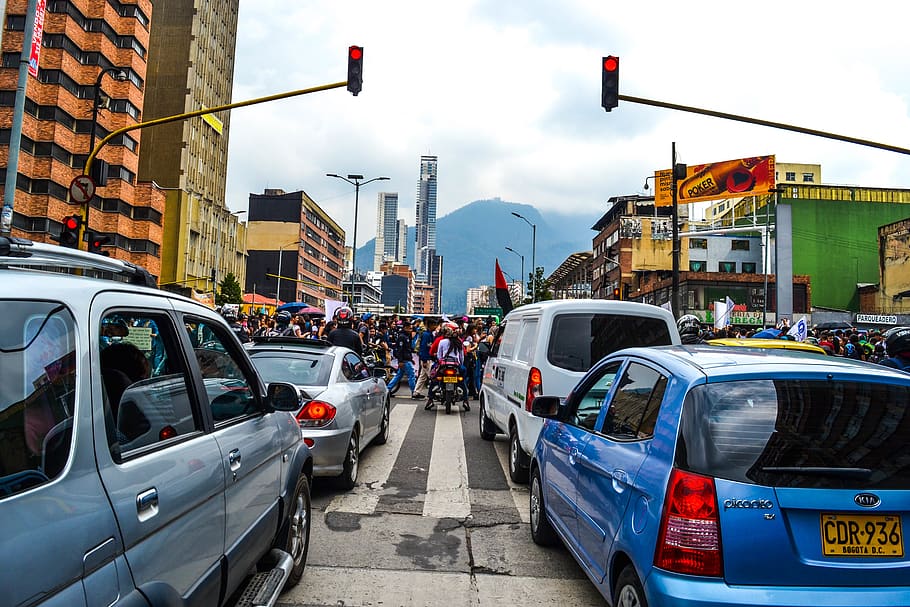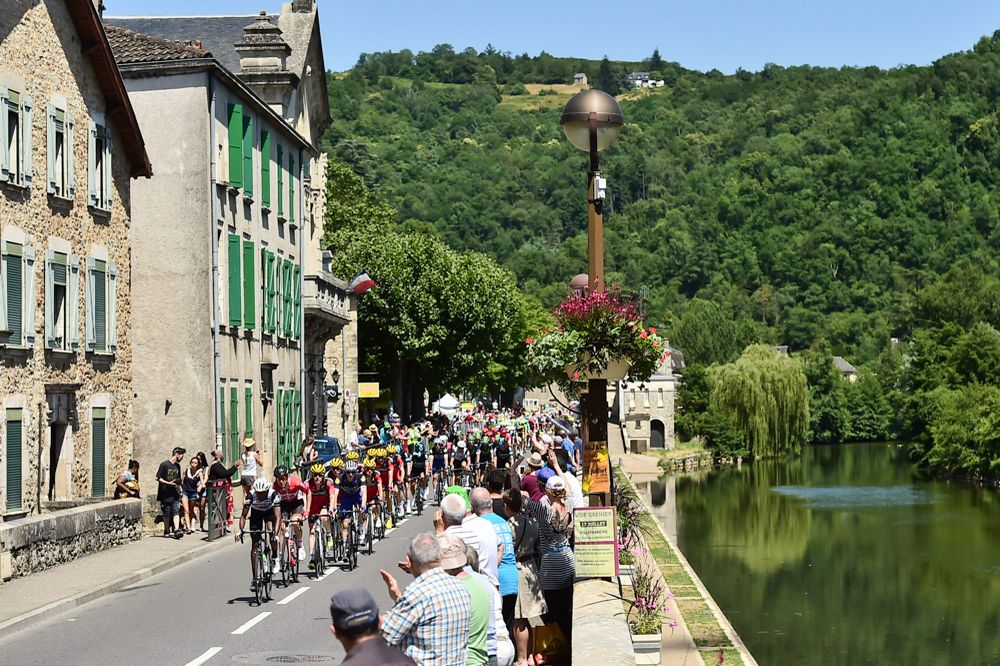Bogotá is dominated by motorised transport – but is that a good thing?
This morning, there’s a protest on Calle 13 by bus operators. They’re up in arms because of a newly-installed bike lane. I’m hardly surprised – every time I write something mentioning that it might be nice if bike users weren’t risking their lives, we receive a barrage comments from moaning drivers. It’s not just cyclists, either, pedestrians need protection too.

Of course, this is nothing strange – bicycle infrastructure annoys people the world over, or at least it annoys a vocal minority with plenty of power. The protests invariably come from motorists, usually private car drivers. Remember, this might be a large group in other countries, but is still relatively small in Bogotá – 86% of city journeys are not by car. It’s also true that there should be bus infrastructure to match the bikes – why not have dedicated lanes for buses? It would squeeze out the drivers, but that’s the idea.
The sick irony of this is that those motorists have incredible amounts of their own infrastructure. Just look at any street in Bogotá and think about how much space is given over to car drivers – main roads obviously, but also petrol stations, parking spaces, parking blocks, signs and signals, access roads.
Whose convenience is more important?
At the heart of the debate, though, we have to think about who we want to use the city, and who we want to benefit. Imagine two cities. In city A, motorists have to drive extremely slowly in certain zones. They are inconvenienced, but on the other hand, kids can happily play football in the street and everyone can cross the road without fearing death. In city B, motorists get to their destinations much quicker – up to a whopping ten minutes earlier. However, every pedestrian is massively restricted. Well, you don’t have to imagine one of those cities – it’s the reality of B(ogotá). Once travel restrictions ease, you can jump on a flight to Europe and you can visit A(msterdam) easily.
Ah, you’ll say, but Bogotá is not Amsterdam. That’s true, but Amsterdam of yesteryear wasn’t like Amsterdam either, back in the day. There was a concerted effort to change the layout and operation of the city, in response to growing numbers of dead children on the roads. Today, Amsterdam is hailed as a livable city and a pleasure to stroll about in. And guess what? There are still plenty of cars about, they just don’t have unfettered primacy. Sounds like the best of both worlds to me. Not just Amsterdam, but countless cities have done similar – Tokyo and London to name just two that I’ve lived in.
There are solutions the world over to these problems, proven and tested. Bus lanes function as bike lanes in many British cities; some cities pedestrianise zones of the city; mass transit exists world-over. There are few reasons why these couldn’t be implemented in Bogotá. This city is full of people who fundamentally like cyclists and cycling. Car-free days already exist. Closing the Calles on a Sunday brings thousands of people onto the streets and whatever you may think of the pedestrianisation of Bogotá city centre, it’s been a roaring success. Car usership only makes up around 15% of city travel and there are already hundreds of kilometres of cyclepaths, even if not perfect. With a metro coming, there’s no reason not to make the city much more pleasant to live in. The conditions are good to sow the seeds of a city not ruled by the internal combustion engine.
The car lobby is powerful and loud. But they don’t represent the majority of people, particularly not in Bogotá. This is not the USA, however much some people would like it to be. And remember, US cities rarely trouble the quality of life indices – European, Asian and Oceanic cities dominate. Cutting down (not eliminating) private car usership would free up urban space for parks. It would promote small businesses, as shoppers on foot tend to make more purchases. It would cut pollution, not only from the cars themselves, but from fewer traffic jams. That lack of traffic jams would help everyone move about more smoothly. I remember 90s London – it was a horrible place to move about in, congested and clogged. The congestion charge changed everything. If we can change, you too can change.





